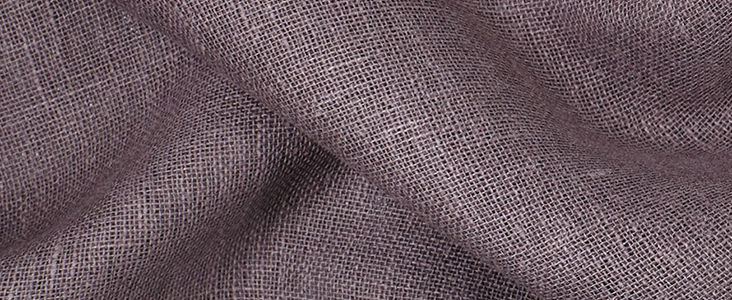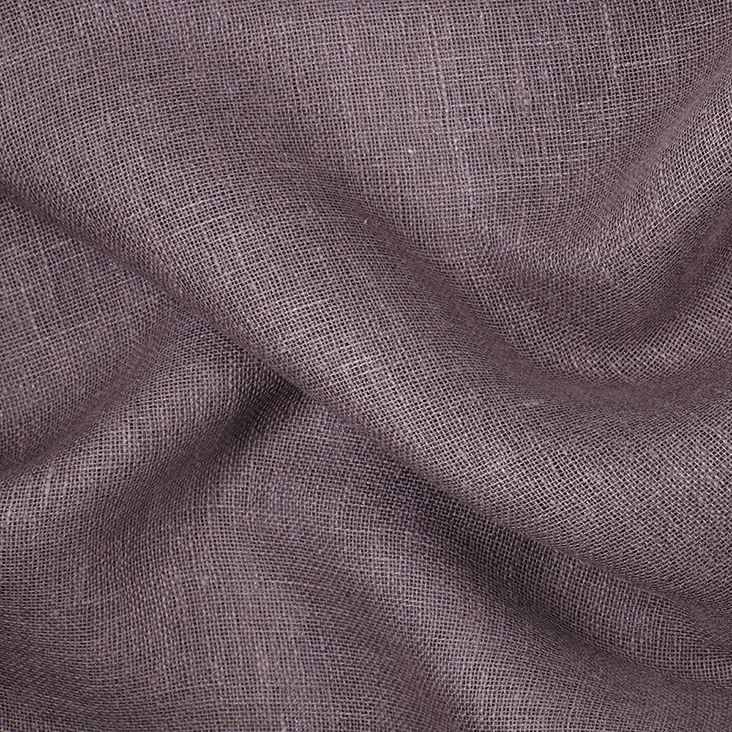FS Colour Series: Gray Sparrow inspired by Joseph Beuys’ Elemental Forces
GRAY SPARROW Linen is warm and embracing, folding and hiding secrets within. German arte povera artist Joseph Beuys masterfully enveloped this slate grey into his art, investing the rugged simplicity of humble, ordinary materials with mystical, magical properties. Heaving weather beaten slabs of rock, chalk-smeared blackboards and rolls of muffling felt into complex arrangements, Beuys delved into the subtle, delicate and earthy tonalities of grey, connecting us back to elemental forces at the root of human survival. Writer John Berger commented, “… he took objects and arranged them in such a way that they beg the spectator to collaborate with them … by listening to what their eyes tell them and remembering.”
Much like his art, Beuys’ life is shrouded in mystery, weaving fact, fiction and folklore into one. Born in 1921 in Krefeld as an only child, his parents were strictly Catholic, instilling a structured, rigorous order into his upbringing which he spent much of his adult life unravelling. When Beuys was still a baby they moved to the industrial town of Kleve, where Beuys attended school, showing an early inclination towards art and music. The Nazi party took hold of Germany when he was just 12, and Beuys claimed, in an unverifiable account, that he rescued Carolus Linnaeus’ ground-breaking Systema Naturae, 1735, from a book burning rally, which, whether true or not, demonstrated his early left-leaning politics.
Despite artistic inclinations, Beuys initially chose to begin his career in medicine, although he left in 1941 to enrol in the German air force. While there, in an account many believe to be fictional, Beuys claimed he was shot down in his plane on the Crimean Front in the Ukraine, and saved by a group of nomadic Tartars, who greased his body with fat and wrapped him in felt to keep him alive. Since then, the insulating properties of felt became a mainstay in his practice, taking an unlikely array of guises.
Homogeneous Infiltration for Grand Piano, 1966 muffles a huge grand piano in grey felt, rendering it entirely mute and transforming it into a mummified version of itself. On one hand Beuys warns us of the dangers in political or societal silencing, yet the red cross also hints at the comforting, healing powers invested in this soft, naturally derived grey fabric. Sled, 1969 is more directly linked to Beuys’ unusual story, as a bundled grey blanket is tightly bound with a flash torch onto a simple wooden sledge, speaking of hunting, struggle and survival in the great wilderness.
While living and teaching in Dusseldorf in the early 1970s Beuys made his iconic Felt Suit, 1970, for the gallerist Rene Block, stating it was “tailored after my own suit.” Matched to his body proportions, the suit hangs like a ghostly, bodily relic of the artist’s huge, hulking figure, while the soft, natural fibres have an earthy, visceral materiality that hints at underlying vulnerability, transforming a simple, ordinary item into a contemplative, suspended moment.
In other works, Beuys harnessed the mystical properties of other grey toned, natural materials, particularly stone and slate. The End of the Twentieth Century, 1983–5 is one of his most monumental works of art, made from 31 bulky basalt rocks strewn across the gallery floor, a volcanic rock that art historian Victoria Walters says Beuys associated with “a very long-term, geological notion of time.” Beuys drilled holes into each rock and filled them with the more modern, yet equally natural, substances of felt and clay, merging old, organic matter with new, emphasising his commitment to ecology and the preservation of the world through natural regeneration. “This is the old world,” he wrote, “on which I press the stamp of the new.”

























































2 Comments
Sarah Dombrowsky
Thank you for this informative article. I have been intrigued by Beuys for many years now, since I saw a book on his work when I was working in a university library. Seeing his work allowed me to realize that art is the effect of interactions between the artist and the media and the viewer. Before that I must have thought that art was a piece of marble, or paint on fabric, something that can be bought and sold.
Rosie Lesso
Thank you for the feedback! Yes, indeed, his art has such an amazing ability to connect with the viewer through physical materials…